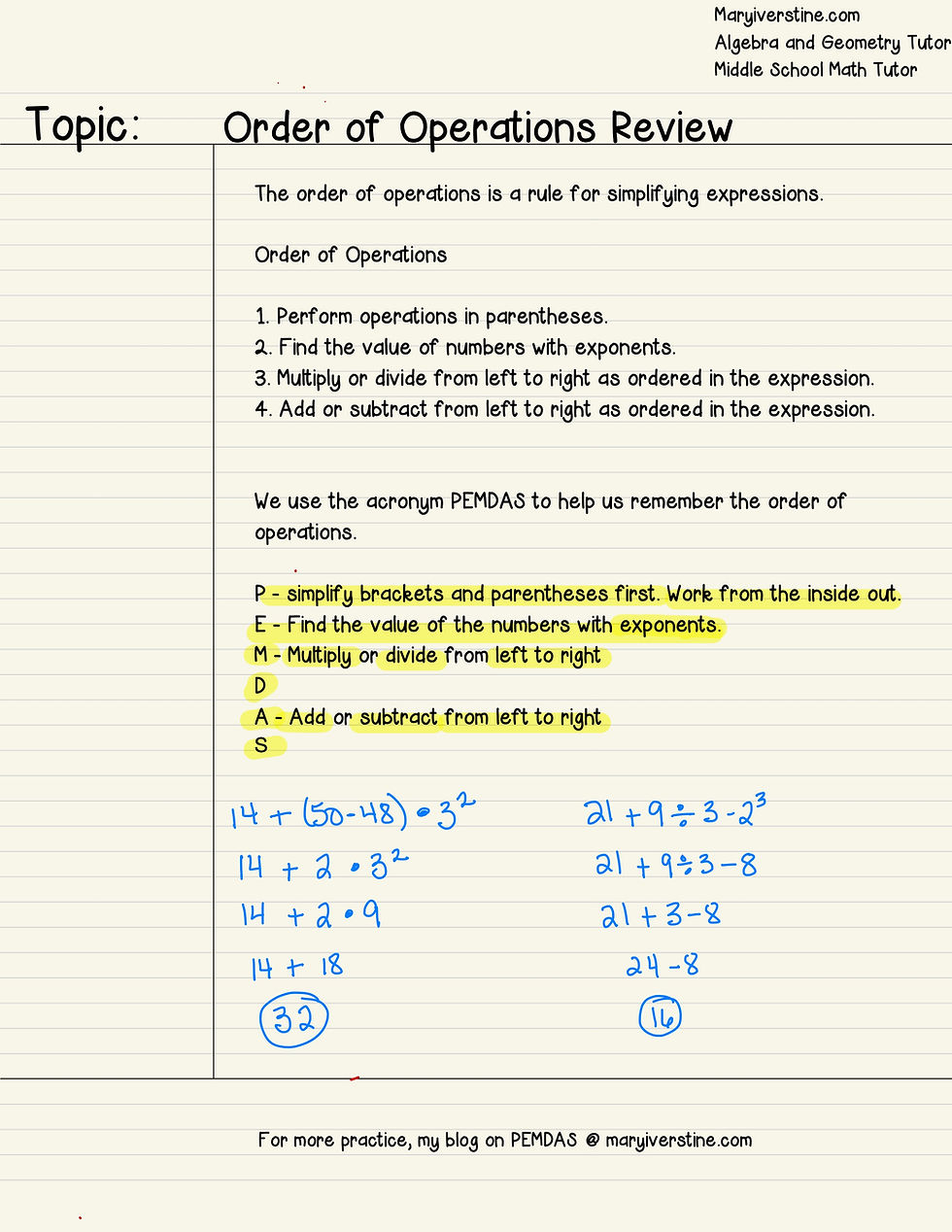Order of Operations in Math
If someone presented you with a series of numbers and no context, what would you do? Some may try to begin solving the problem based on its order; unfortunately, in the world of math, this isn’t an effective way to solve a problem.
People generally say that the order of operations is nothing more than an arbitrary convention - that is, there had to be some rule so everyone would read an expression the same way, so they just chose a rule.
I don't think any one person made the decision, but it just gradually developed as the modern symbols for algebra and arithmetic developed. But I think there is a good reason that the traditional order was agreed upon without any arguments. The reason is the distributive rule, which we write as: a * (b + c) = a * b + a * c If we reversed the order of operations, doing addition before multiplication, we would write it this way: a * b + c = (a * b) + (a * c) To put it more simply, we do multiplication before addition because multiplication distributes over addition; multiplication is in some sense "more powerful" by nature.
We all use order of operations even if you are not aware of it.
For example, when you go grocery shopping. Let's say almonds cost $3.00 per pound, and a bottle of water is $1.00. You get two pounds of almonds and one bottle of water.
How much are you going to have to pay?
Since one pound of almonds is $3.00 and you purchased two pounds, the almonds will cost $6.00. Add that to what you pay for the water ($1.00), and the total is $7.00.
Pretty simple right? You probably figured out this without any major issues. However, if you were presented the problem in a different way, you may not solve it correctly.
For example, if you were given:
2 x 3 + 1
With this problem, you may have added the three and one first, then multiply the result by two. Solving this way provides an answer of eight, which is not equal to seven.
To arrive at the correct answer, you have to multiply first.
When simplifying expressions and making calculations, always make sure to follow the rules of the order of operations.
1. Perform operations in brackets and parentheses.
2. Find the value of numbers with exponents.
3. Multiply or divide from left to right as ordered in the expression.
4. Add or subtract from left to right as ordered in the expression.
So, what is PEMDAS. PEMDAS is a mnemonic used to help us remember the order of operations.
P - Simplify brackets and parentheses first. Work from the inside out.
E - Find the value of the numbers with exponents.
M - Multiply or divide from left to right
D
A - Add or subtract from left to right
S
Examples

Download practice with solutions:
PEMDAS PRACTICE WITH SOLUTIONS
PEMDAS NOTES WITH EXAMPLES
The best way to get better at any math skill is to practice. It takes someone between 15 and 30 repetitions, to master a skill. For more review on all the skills that you need for Algebra 1, watch the videos on my Instagram page or go to my website, maryiverstine.com.
Interested in algebra tutoring services? Learn more about how Mary Iverstine, Algebra and Geometry Tutor, helps students complete their math homework with more confidence, increase their algebra and geometry test scores, and reduce their stress and anxiety towards mathematics.
Mary Iverstine specializes in tutoring algebra and geometry to students in middle school and high school. When Mary is not tutoring students or studying mathematics, she loves to spend time with her husband, two children and two dogs.



Commenti